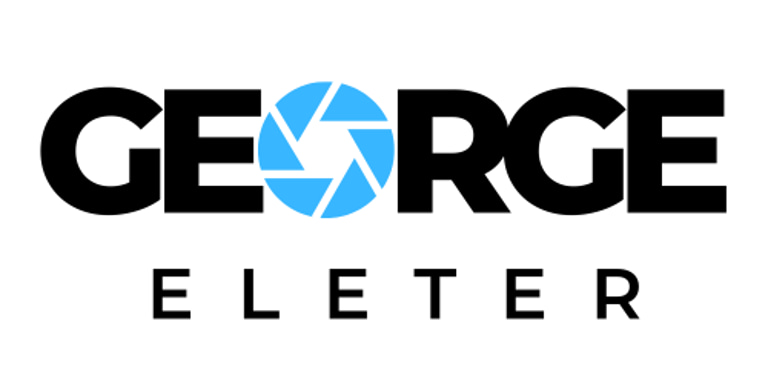Unleashing the Art of Creative Sports Photography
Creative sports photography, Exploring the dynamic intersection of athleticism, elaborate settings, and visionary photographic techniques.
George Eleter
6/6/20247 min read


Introduction to Creative Sports Photography
Creative sports photography is an evolving genre that transcends the conventional boundaries of traditional sports photography. While the latter primarily focuses on documenting events and capturing significant moments, creative sports photography aims to infuse an element of artistry into these visuals. This approach is not just about freezing motion but also about imbuing each frame with a sense of narrative and emotion.
At its core, creative sports photography is about capturing the essence of athleticism in a way that resonates with viewers on a deeper level. It involves the use of innovative techniques such as unconventional angles, dramatic lighting, and thoughtful composition to create images that are both visually striking and emotionally evocative. This artistic expression transforms ordinary sports photographs into compelling stories that highlight the passion, intensity, and dedication of athletes.
The importance of creativity in sports photography cannot be overstated. In a world where media consumption is predominantly visual, the ability to produce unique and captivating images is highly valued. Creative sports photography not only enhances the aesthetic appeal of sports imagery but also engages audiences more effectively. This genre has gained significant traction in various media outlets, including magazines, online platforms, and advertising campaigns, where there is a growing demand for visually compelling content.
As the popularity of creative sports photography continues to rise, it offers photographers an exciting opportunity to push the boundaries of their craft. By merging the dynamism of sports with the principles of art, photographers can create powerful images that stand out in an increasingly saturated market. This blend of technical skill and creative vision is what sets creative sports photography apart, making it a sought-after specialization in the field of photography.
Essential Equipment and Techniques
Creative sports photography demands a keen understanding of the right equipment and techniques to capture the essence of the action. The choice of camera plays a pivotal role in this regard. Professional sports photographers often prefer DSLRs or mirrorless cameras due to their fast autofocus systems and superior image quality. Models like the Canon EOS-1D X Mark III or the Sony Alpha 1 are highly recommended for their performance in high-speed environments.
Equally important are the lenses. Telephoto lenses, such as the 70-200mm f/2.8, are indispensable for capturing distant subjects with clarity. Wide-angle lenses, on the other hand, are useful for encompassing the entire scene, providing a sense of place and context. Prime lenses with wide apertures (e.g., 50mm f/1.8) are also favored for their ability to perform well in low-light conditions and create striking bokeh effects.
In addition to cameras and lenses, accessories like monopods and tripods offer stability, particularly during long shooting sessions. A monopod is often preferred in sports environments due to its portability and ease of movement. Moreover, high-speed memory cards are essential to ensure rapid data writing, preventing missed shots during the peak action.
Advanced techniques further elevate the artistry of sports photography. Panning, for instance, involves moving the camera along with the subject's motion, resulting in a sharp subject against a blurred background. This technique can convey a sense of speed and dynamism. Similarly, experimenting with slow shutter speeds can create dramatic motion blur, adding a creative flair to the shots.
Lighting is another critical element. Utilizing natural light effectively can enhance the mood and atmosphere of the photograph. For indoor sports or low-light conditions, artificial lighting such as speedlights or strobes can be used to freeze the action and highlight key moments.
Lastly, understanding and adjusting camera settings in real-time is crucial. Fast shutter speeds (above 1/1000s) are typically required to freeze motion, while a higher ISO setting might be necessary in dimly lit environments. Adapting to different sports environments, whether it's a brightly lit stadium or an indoor arena, requires quick adjustments to these settings to ensure optimal image quality.
Capturing Motion and Emotion
In the realm of creative sports photography, capturing the intensity and emotion of the moment is paramount. This involves more than just pointing the camera and pressing the shutter button; it requires an understanding of the sport, the ability to anticipate key moments, and the skill to position oneself for the optimal shot. By mastering these elements, photographers can create images that not only freeze fast action but also convey the raw emotions of the athletes.
Freezing fast action is one of the fundamental techniques in sports photography. Utilizing a high shutter speed, typically 1/1000th of a second or faster, ensures that the motion is captured in crisp detail. This technique is particularly effective in sports like basketball, soccer, or track events, where athletes move at high speeds. However, it's equally important to experiment with motion blur, which can add a dynamic and artistic element to the images. Using a slower shutter speed can create a sense of movement, highlighting the speed and energy of the action.
Equally crucial is the ability to capture the athletes' expressions. The intensity of a sprinter's face as they cross the finish line, the determination in a goalkeeper's eyes as they dive for the ball, or the elation of a gymnast after a perfect routine—these moments are what make sports photography compelling. To capture these expressions, photographers should focus on the athletes' faces, using a telephoto lens to get close-up shots while maintaining a respectful distance.
Positioning oneself for the best angles is another critical aspect. Understanding the sport and anticipating where the action will occur can significantly enhance the composition of the photographs. For instance, positioning at the finish line in a race or near the goal post in a soccer match can provide vantage points for capturing decisive moments.
Ultimately, the goal of creative sports photography is to tell a story through images. Each photograph should convey the drama, excitement, and emotion of the event, allowing viewers to relive the moments. By combining technical skills with an understanding of the sport and a keen eye for emotional moments, photographers can create powerful and evocative images that resonate with audiences.
Post-Processing and Editing Techniques
In the realm of creative sports photography, post-processing and editing techniques play a crucial role in transforming a good photo into an exceptional one. The essence of sports photography lies in its ability to capture the intensity, emotion, and dynamism of athletic performances. However, raw images often require fine-tuning to fully realize their potential. This is where various editing tools and software come into play, offering a multitude of options to enhance and perfect sports photos.
One of the fundamental techniques in post-processing is cropping. Cropping allows photographers to focus on the most compelling aspects of a scene, eliminating distractions and emphasizing the key elements of the action. By carefully selecting the frame, the photographer can guide the viewer's eye to the most significant moments of the event.
Color correction and contrast adjustment are also pivotal in sports photography. These techniques help to bring out the vibrancy and dramatic contrasts that are often present in athletic events. Adjusting the color balance can correct any inaccuracies caused by varying lighting conditions, while contrast adjustment can enhance the depth and dimension of the image, making the subjects stand out more prominently.
Adding special effects can further elevate the artistic quality of sports photographs. Techniques such as motion blur, vignetting, and selective desaturation can add a creative flair to the images, highlighting the energy and movement inherent in sports. However, it is essential to use these effects judiciously to maintain the authenticity of the moment.
Ethical considerations are paramount when editing sports photographs. It is important to ensure that the integrity of the event and the athletes is preserved. Over-editing or altering key elements can misrepresent the reality of the competition and disrespect the athletes' efforts. Therefore, while creative adjustments are encouraged, they should always be executed with a commitment to truthfulness and respect for the sport.
By mastering these post-processing and editing techniques, photographers can significantly enhance their sports images, creating visually compelling and authentic representations of athletic excellence.
Building a Unique Style
Developing a personal style is paramount in the realm of creative sports photography. It is this unique voice that allows photographers to stand out in a crowded field. One effective approach is to experiment with different perspectives, compositions, and themes. By venturing beyond conventional angles and settings, photographers can discover new ways to capture the dynamism and emotion of sports.
Consider the work of renowned sports photographers like Neil Leifer and Annie Leibovitz. Leifer’s iconic shot of Muhammad Ali standing triumphantly over Sonny Liston is celebrated for its dramatic composition and timing. Leibovitz’s portraits, meanwhile, are distinguished by their intimate and often unconventional perspectives. Both photographers have developed distinctive styles that are immediately recognizable and have made significant contributions to sports photography.
To cultivate a unique style, photographers should also focus on their thematic approach. Are you drawn to the raw intensity of individual sports, or do you prefer the collective spirit of team events? Perhaps you are captivated by the moments of preparation and anticipation rather than the climactic action itself? By identifying and consistently emphasizing these themes, you can create a cohesive and recognizable body of work.
Additionally, consistency is key. Whether shooting a high-paced basketball game or a serene golf match, applying your unique style across various sports and events will help build a strong and identifiable portfolio. This might involve using specific lenses, particular post-processing techniques, or maintaining a consistent color palette.
Finally, it’s important to stay inspired and continually evolve. Engage with the work of other photographers, attend exhibitions, and participate in workshops. By doing so, you can refine your style and ensure it remains fresh and relevant. Developing a unique style is an ongoing process, but it is one that can lead to a highly rewarding and distinguished career in creative sports photography.
Showcasing Your Work and Building a Portfolio
Building a professional portfolio is a crucial step for any creative sports photographer aiming to stand out in a competitive field. A well-curated portfolio not only highlights your technical skills but also reflects your unique artistic vision. Begin by selecting your best images that embody your style and proficiency. Prioritize quality over quantity; a concise yet powerful collection will leave a stronger impression than a vast array of mediocre shots. Pay attention to variety as well, incorporating action shots, close-ups, and emotional moments to showcase your versatility.
Choosing the right platforms to display your work can significantly impact your reach and engagement. A personal website acts as a central hub where potential clients and collaborators can explore your portfolio in detail. Make sure it is visually appealing and easy to navigate. Optimize your site for SEO to enhance visibility in search engine results. Social media platforms like Instagram, Facebook, and Twitter are also invaluable for promoting your photography. Utilize hashtags, engage with followers, and consistently update your profiles to maintain an active presence.
Participating in photography exhibitions offers another avenue for exposure. Exhibitions provide a tangible platform to showcase your work and connect with other professionals and enthusiasts in the industry. They also offer opportunities for critical feedback and potential sales. Look for local galleries, sports events, and photography clubs that host exhibitions or competitions. Additionally, entering photography contests can elevate your profile. Winning or even being shortlisted in reputable contests adds credibility to your portfolio and can attract attention from industry leaders.
Networking is fundamental in building a successful career in creative sports photography. Attend sports events, workshops, and industry conferences to meet other photographers, athletes, and potential clients. Collaborate with sports teams and brands to create mutually beneficial projects. These collaborations not only provide exposure but also open doors to future opportunities. Make use of online communities and forums to connect with peers and stay updated on the latest trends and opportunities in sports photography.


